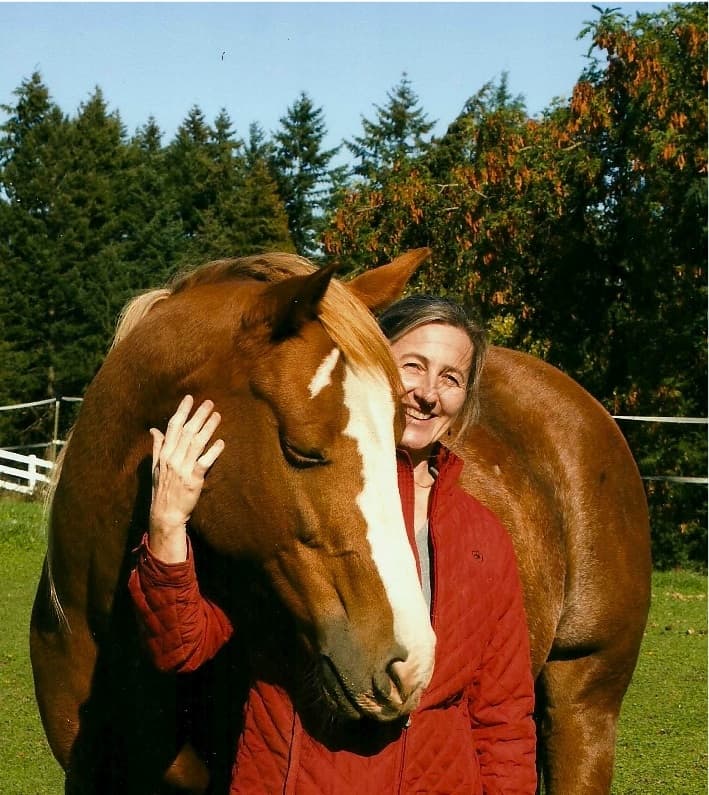Why is My Horse Aggressive in the Stall?
- Posted by Robin Foster, PhD, Cert. Applied Animal Behaviorist (CAAB), Cert. Horse Behavior Consultant (CHBC)

Q.My 24-year-old mare has gotten rather grumpy as she’s aged. She does not like other horses in her personal space, especially geldings. This has started to become a problem, because she will pin her ears and even act like she’s going to lunge through the window at the geldings when we lead them by her stall. Verbal scolding has helped a bit, but I’m concerned that she might accidentally bite a person leading a horse, when she’s actually going after the horse. Do you have any suggestions on what’s making my horse aggressive in the stall and how I can stop it?
—Andi, via e-mail
A.A horse who displays aggressively toward other horses walking past his or her stall can be found in nearly every barn, and your concern about incidental injury to a person is justified
Create a free account with TheHorse.com to view this content.
TheHorse.com is home to thousands of free articles about horse health care. In order to access some of our exclusive free content, you must be signed into TheHorse.com.
Start your free account today!
Already have an account?
and continue reading.

Written by:
Robin Foster, PhD, Cert. Applied Animal Behaviorist (CAAB), Cert. Horse Behavior Consultant (CHBC)
Related Articles
Stay on top of the most recent Horse Health news with
















3 Responses
I have a gelding boarded at a large boarding barn near where I live. Whenever the horses are taken out to their respective pastures each day, they walk right past his stall and he tries to bite them, according to what I have been told. I can’t be there every day, so I only go on weekends. He has never done it when I am there. Since I’m not there when he does it, how can this behavior be stopped?
These are a few facts I have garnered from the world’s leading equine ethologists and research scientists.
Fact: Horses are designed to have a complex social structure in which a number of different levels of relationship are possible.
Fact: Horses are designed to undertake a number of roles in service of herd safety and management. Co-operative social function is supported and developed by such activity.
Fact: Horses are designed to spend a considerable portion of their day – up to 18 hours – in social grazing. Throughout this time period a process of social bonding and reinforcement of group cohesion is in play via continual social interaction.
Fact: Unlike humans, the horses’ stomach constantly produces the same amount of acid. Ulcers can develop in both the nonglandular and glandular portions of a horse’s stomach, and they are most commonly found in the area of the margo plicatus (the region that separates the glandular from nonglandular portions of the stomach). The glandular part of the stomach contains a mucosa with glands that secrete acid and pepsin, which are important aids in the early digestion of food. The glands also produce bicarbonate and mucus, which help form a protective barrier over the mucosal surface. This protects the glandular stomach from the damaging effects of acid and pepsin. The non-glandular region, however, has few defenses and is particularly susceptible to injury caused by stomach acid (i.e., ulcers). Without a nearly constant flow of forage, (I did not see any slow feeder haynets in the stalls) or chewing, the probability is very high that he has very painful ulcers.
Fact: Horses do not experience REM sleep except in the prone position. Social groups provide a sense of safety and one or more ‘watchers’ to stand guard – facilitating REM sleep and its consequential brain maintenance.
Fact: Equine culture can only be learned by membership of a social group.
Fact: Inadequate social environments produce a number of psychological conditions which tend to disrupt ability to function in social settings and may also be detrimental in respect to social bonding and sexual partnership.
Fact: The anatomical design of the horse is an adaptation to a free-ranging lifestyle.
My gelding was aggressive in his stall after having been raised outside and rarely stalled. When I got him there was only stall board and limited turnout available at my barn. So I had the idea to clicker train him. I stood outside his stall with my clicker and a treat. When he approached with ears pinned I did nothing. When he came with ears up and a happy face he got a click and the treat. I did this when people walked by and when horses walked by. It took a few weeks but eventually he connected the traffic by his stall with getting a treat. Only the barn staff and I am allowed to feed him anything, including treats. So now he knows where food comes from and from whom. End of problem.